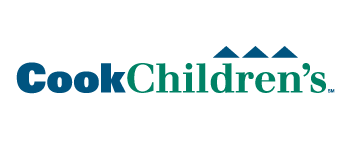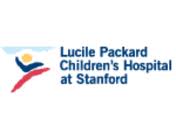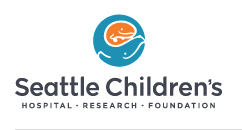Panobinostat With Fludarabine and Cytarabine for Treatment of Children With Acute Myeloid Leukemia or Myelodysplastic Syndrome
| Status: | Terminated |
|---|---|
| Conditions: | Cancer, Blood Cancer, Blood Cancer, Blood Cancer, Blood Cancer, Hematology |
| Therapuetic Areas: | Hematology, Oncology |
| Healthy: | No |
| Age Range: | Any - 24 |
| Updated: | 11/16/2018 |
| Start Date: | May 3, 2016 |
| End Date: | April 9, 2018 |
A Phase I and Dose Expansion Cohort Study of Panobinostat in Combination With Fludarabine and Cytarabine in Pediatric Patients With Refractory or Relapsed Acute Myeloid Leukemia or Myelodysplastic Syndrome
Cancer is the uncontrolled growth of human cells. The growth of normal human cells is
controlled by multiple mechanisms. Panobinostat belongs to a class of chemotherapy drugs
called "histone deacetylase (HDAC) inhibitors." HDAC inhibitors like panobinostat block
enzymes known as histone deacetylases, which stops cancer cells from dividing and causes them
to die. Fludarabine and cytarabine are chemotherapy drugs that are commonly used to treat
pediatric patients with refractory or relapsed acute myeloid leukemia (AML) or
myelodysplastic syndrome (MDS).
The purpose of this study is to test the safety of panobinostat and to find the highest dose
of panobinostat that can be given safely when it is combined with fludarabine and cytarabine.
This pilot study will be done in two parts: The goal of Part 1 of the study is to find the
highest tolerable dose of panobinostat that can be given to patients with AML or MDS, when it
is combined with fludarabine and cytarabine. Once that dose is determined, participants will
be enrolled on Part 2: Dose Expansion, to look at the effect of the
panobinostat/fludarabine/cytarabine combination in patients with leukemia/MDS.
PRIMARY OBJECTIVE:
- Determine a tolerable dose of panobinostat when given in combination with fludarabine
and cytarabine in pediatric patients with relapsed or refractory AML or MDS.
SECONDARY OBJECTIVES:
- Characterize the pharmacokinetics of panobinostat after the first dose and at
steady-state.
- Estimate the overall response rate to the combination of panobinostat, fludarabine, and
cytarabine.
controlled by multiple mechanisms. Panobinostat belongs to a class of chemotherapy drugs
called "histone deacetylase (HDAC) inhibitors." HDAC inhibitors like panobinostat block
enzymes known as histone deacetylases, which stops cancer cells from dividing and causes them
to die. Fludarabine and cytarabine are chemotherapy drugs that are commonly used to treat
pediatric patients with refractory or relapsed acute myeloid leukemia (AML) or
myelodysplastic syndrome (MDS).
The purpose of this study is to test the safety of panobinostat and to find the highest dose
of panobinostat that can be given safely when it is combined with fludarabine and cytarabine.
This pilot study will be done in two parts: The goal of Part 1 of the study is to find the
highest tolerable dose of panobinostat that can be given to patients with AML or MDS, when it
is combined with fludarabine and cytarabine. Once that dose is determined, participants will
be enrolled on Part 2: Dose Expansion, to look at the effect of the
panobinostat/fludarabine/cytarabine combination in patients with leukemia/MDS.
PRIMARY OBJECTIVE:
- Determine a tolerable dose of panobinostat when given in combination with fludarabine
and cytarabine in pediatric patients with relapsed or refractory AML or MDS.
SECONDARY OBJECTIVES:
- Characterize the pharmacokinetics of panobinostat after the first dose and at
steady-state.
- Estimate the overall response rate to the combination of panobinostat, fludarabine, and
cytarabine.
STUDY PART 1: Dose Escalation Cohort
During the dose escalation phase (Part 1), participants will receive one course of
panobinostat plus fludarabine and cytarabine. The starting dose of panobinostat will be 10
mg/m^2/dose, with 2 additional dose levels of 15 and 20, depending on tolerability. Each
course is 12 days
STUDY PART 2: Dose Expansion Cohort
The recommended phase 2 dose (RP2D) will be chosen based on the maximum tolerated dose (MTD)
and the totality of data obtained from study Part 1. Additional patients will be enrolled, if
needed, so that at least 6 patients are treated with the recommended RP2D to confirm the MTD
of panobinostat to be given in study Part 2.
After final MTD determination, 12 additional participants will be treated at this dose level
for further evaluation of tolerability and response, including more complete toxicity data
and estimation of the response rate to the combination of panobinostat, fludarabine, and
cytarabine.
During the dose escalation phase (Part 1), participants will receive one course of
panobinostat plus fludarabine and cytarabine. The starting dose of panobinostat will be 10
mg/m^2/dose, with 2 additional dose levels of 15 and 20, depending on tolerability. Each
course is 12 days
STUDY PART 2: Dose Expansion Cohort
The recommended phase 2 dose (RP2D) will be chosen based on the maximum tolerated dose (MTD)
and the totality of data obtained from study Part 1. Additional patients will be enrolled, if
needed, so that at least 6 patients are treated with the recommended RP2D to confirm the MTD
of panobinostat to be given in study Part 2.
After final MTD determination, 12 additional participants will be treated at this dose level
for further evaluation of tolerability and response, including more complete toxicity data
and estimation of the response rate to the combination of panobinostat, fludarabine, and
cytarabine.
Inclusion Criteria:
- Participants must have a diagnosis of AML or MDS and must have disease that has
relapsed or is refractory to chemotherapy, or that has relapsed after hematopoietic
stem cell transplantation (HSCT).
- Refractory disease is defined as persistent disease after at least two courses of
induction chemotherapy.
- Patients with AML must have ≥ 5% leukemic blasts in the bone marrow or increasing
levels of minimal residual disease (MRD) in the bone marrow as assessed by flow
cytometry. If an adequate bone marrow sample cannot be obtained, patients may be
enrolled if there is unequivocal evidence of leukemia in the peripheral blood.
- Adequate organ function defined as the following:
- Direct bilirubin ≤ 1.5 x institutional upper limit of normal (IULN)
- AST (SGOT) and ALT (SGPT) ≤ 2.5 x ULN
- Creatinine ≤ 1.5 x ULN for age
- Serum albumin > 3.0 g/dl
- Left ventricular ejection fraction ≥ 40% or shortening fraction ≥ 25%.
- Age ≤ 24 years
- Patients must be able to swallow capsules
- Performance status: Lansky ≥ 50 for patients who are ≤ 16 years old and Karnofsky ≥
50% for patients who are > 16 years old.
- Patients must have fully recovered from the acute effects of all prior therapy and
must meet the following criteria:
- At least 14 days must have elapsed since the completion of myelosuppressive
therapy
- At least 24 hours must have elapsed since the completion of low-dose
chemotherapy, such as hydroxyurea or low-dose cytarabine (up to 200 mg/m^2/day).
- For patients who have received prior HSCT, there can be no evidence of GVHD and
greater than 60 days must have elapsed since the HSCT. Patients cannot be
receiving therapy, including steroids, for the treatment or prevention of GVHD.
All such medications must be discontinued at least 24 hours prior to enrollment.
- Body Surface Area: Because the smallest capsule size available for the panobinostat is
10 mg, the minimum BSA allowed for enrollment at Dose Level 1 to 0.85 m^2. The minimum
for Dose Level 2 is BSA=0.6 m^2 and the minimum for Dose Level 3 is BSA=0.42 m^2.
Exclusion Criteria:
- Must not be pregnant or breastfeeding. Female patients who are sexually active and of
child-bearing potential must agree to use dual methods of contraception and have a
negative serum pregnancy test at screening, and male patients who are sexually active
must use an effective barrier method of contraception if sexually active with a female
of child-bearing potential. For both male and female patients who are sexually active,
effective methods of contraception must be used throughout the study and for three
months following the last dose. Abstinence is an acceptable form of contraception.
- Patients with Down syndrome, acute promyelocytic leukemia, juvenile myelomonocytic
leukemia, Fanconi anemia, Kostmann syndrome, Shwachman syndrome, or other bone marrow
failure syndromes are not eligible.
- Use of investigational agents within 30 days.
- Any significant concurrent disease, illness, or psychiatric disorder that would
compromise patient safety or compliance, study participation, follow up, or
interpretation of study research.
- Uncontrolled infection within one week of the first dose. Infections controlled on
concurrent anti-microbial agents are acceptable, and anti-microbial prophylaxis per
institutional guidelines are acceptable.
- Known human immunodeficiency virus infection (pre-study testing not required).
- Patient with diarrhea > CTCAE grade 2. (CTCAE version 4.0)
- Impaired cardiac function or clinically significant cardiac diseases, history of
arrhythmia (including ventricular fibrillation or torsade de pointes), bradycardia <50
bpm, screening ECG with prolonged QTc (> 450 msec), uncontrolled hypertension or any
history or presence of sustained ventricular tachyarrhythmia.
- Impairment of GI function or GI disease that may significantly alter the absorption of
panobinostat.
- Patients using medications that have a relative risk of prolonging the QT interval or
inducing torsade de pointes if treatment cannot be discontinued or switched to a
different medication prior to starting treatment. Granisetron may be administered, but
antiemetics associated with QT prolongation (e.g., ondansetron) are not allowed.
We found this trial at
7
sites
4650 Sunset Blvd
Los Angeles, California 90027
Los Angeles, California 90027
(323) 660-2450

Principal Investigator: Deepa Bhojwani, MD
Phone: 323-361-4110
Childrens Hospital Los Angeles Children's Hospital Los Angeles is a 501(c)(3) nonprofit hospital for pediatric...
Click here to add this to my saved trials
262 Danny Thomas Pl
Memphis, Tennessee 38105
Memphis, Tennessee 38105
(901) 495-3300

Principal Investigator: Jeffrey E. Rubnitz, MD,PhD
Phone: 866-278-5833
St. Jude Children's Research Hospital St. Jude is unlike any other pediatric treatment and research...
Click here to add this to my saved trials
3901 Beaubien St
Detroit, Michigan 48201
Detroit, Michigan 48201
(313) 745-5437

Principal Investigator: Jeffrey Taub, MD
Children's Hospital of Michigan Since 1886, the Children's Hospital of Michigan has been dedicated to...
Click here to add this to my saved trials
801 7th Avenue
Fort Worth, Texas 76104
Fort Worth, Texas 76104
(682) 885-4000

Principal Investigator: Kenneth M. Heym, MD
Phone: 682-885-2103
Cook Children's Medical Center Cook Children's Health Care System is a not-for-profit, nationally recognized pediatric...
Click here to add this to my saved trials
725 Welch Rd
Palo Alto, California 94304
Palo Alto, California 94304
(650) 497-8000

Principal Investigator: Normal J. Lacayo, MD
Phone: 650-497-8953
Lucile Packard Children's Hospital Stanford University Stanford Children's Health is the only network in the...
Click here to add this to my saved trials
San Diego, California 92123
Principal Investigator: Dennis Kuo, MD
Phone: 858-966-5934
Click here to add this to my saved trials
4800 Sand Point Way NE
Seattle, Washington 98105
Seattle, Washington 98105
(206) 987-2000

Principal Investigator: Todd Cooper, MD
Phone: 866-987-2000
Seattle Children's Hospital Seattle Children’s Hospital specializes in meeting the unique physical, emotional and developmental...
Click here to add this to my saved trials